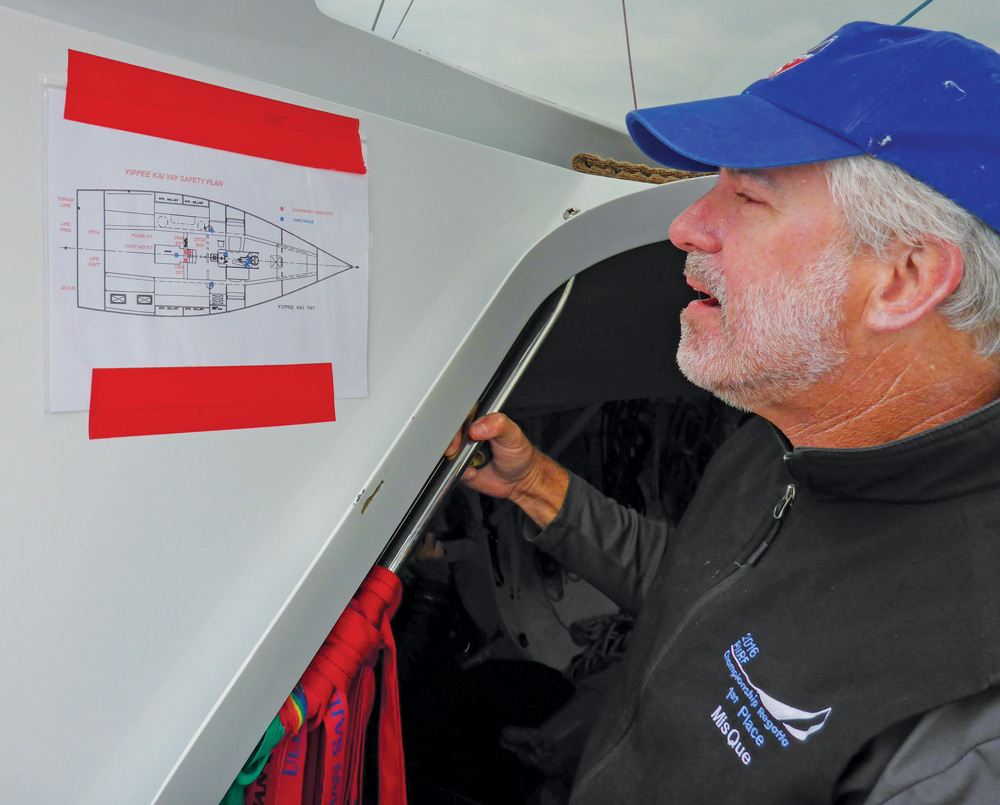Viva Ensenada
The race down the West Coast from Newport Beach, California, to Ensenada, Mexico, has drawn racers for 75 years with fun and challenging sailing
Safety regulations for racers are also a good guide for cruisers
An old adage states, safety isn’t expensive, it’s priceless, especially when planning for an offshore race. Returning to the racecourse after 14 months on the sidelines, we realized much of our safety gear had expired. Flares and fire extinguishers all had to be replaced, and our life raft and MOM unit had to be recertified. Fortunately we were competing under US Sailing Safety Equipment Requirements and the specifications for racing are clear-cut. In our case, the Newport to Ensenada Race is designated a coastal category race, not as strict as the offshore regs, but considerably more stringent than nearshore. The 125-mile course would take us well away from shore dozens of miles into the Pacific, past rugged, uninhabited islands, through active shipping traffic and fishing fleets in the dark of night.

The regulations specify everything from flares to flashlights, antennas and anchors, based on the type of passage being made. These well-supported and comprehensive guidelines are advisable whether you are racing or not, and non racing sailors can take advantage of this great safety resource.
The US Sailing safety requirements cover the boat, from seacock and lifeline specifications to bilge pumps and emergency steering. A standard list of visual distress signals, the type and quantity of flares is clearly laid out and is especially valuable for offshore cruisers. The extensive personal safety requirements, from knives and PFDs to jacklines and harnesses should be a go-to resource for all cruisers. (Visit www.ussailing.org for a complete list.)
Additionally, this year we had to consider the safety of our crew from a new threat: Covid-19. To promote social distancing and minimize crowding both above deck and below, we limited the crew to six. Everyone was asked to wear masks, not gaiters or bandanas, which are less effective in screening out droplets, while in close proximity and doing the grunt work of rigging the boat and hoisting sails.
Prior to the race the entire interior of the boat was thoroughly scrubbed with disinfectant. To maintain optimal cleanliness, a canister of disinfectant was bungeed near the head, and hand sanitizers and disinfectant wipes were also abundant, and several times during the race I wiped down the common areas, nav station and equipment.
Each crewmember was provided a separate sleeping bag, and new pillowcase with their name written on it. It smacked of summer camp, but ensured no one put their head on the same surface as another. All food was individually wrapped. Thank goodness oranges come in their own wrappers. Finally, we updated and enhanced the contents of our first aid kit adding a new thermometer and alcohol wipes in the event anyone felt feverish and needed their temperature taken.
Upon arrival in Ensenada we completed a health survey we had been provided by race organizers. Then, before we could even step off the boat (dockhands were there to tie us up), a pair of health officials reviewed the questionnaire and took each crew member’s temperature and blood oxygen reading. Thankfully we all passed and were each give a special black mask to wear in the public areas signifying we had passed the health protocol. At the finish venue tables were distanced and crowds limited by divvying up the prizegiving into three time slots. All told we felt very safe, and able do our part to contribute to the good health and safety of everyone else.
A safe race starts well before leaving the dock. As another old adage says, “Safety doesn’t happen by accident.”--B.S.

Comments